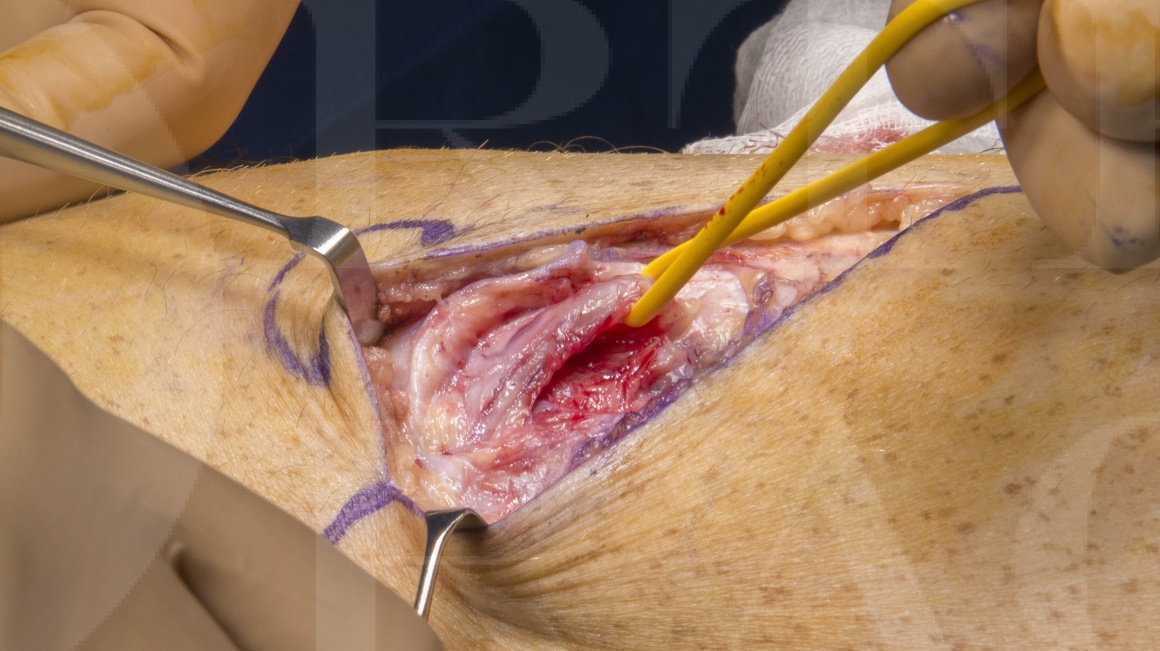Common peroneal nerve decompression, neurolysis and wrapping with the AxoGen AxoGuard nerve protector
Overview

Subscribe to get full access to this operation and the extensive Upper Limb & Hand Surgery Atlas.
Learn the Common peroneal nerve decompression, neurolysis and wrapping with the AxoGen AxoGuard nerve protector surgical technique with step by step instructions on OrthOracle. Our e-learning platform contains high resolution images and a certified CME of the Common peroneal nerve decompression, neurolysis and wrapping with the AxoGen AxoGuard nerve protector surgical procedure.
The common peroneal nerve is vulnerable to injury from direct trauma at the knee or from traction associated with knee dislocation. The presentation is with footdrop due to loss of the function in tibialis anterior and toe extensors supplied through the deep peroneal nerve. In addition there is loss of peroneal tendon function due to loss of the superficial peroneal nerve. There is sensory loss on the dorsum of the foot.
The decision to operate and decompress the nerve should be made by an experienced nerve surgeon after careful clinical examination, repeated examination if necessary and sometimes supportive imaging and neurophysiological assessments. Typically the decision can be made on the basis of the clinical assessment alone. A dense painful lesion with a positive Tinel’s sign at the peroneal tunnel, a deepening lesion with deterioration under observation, a non-recovering lesion or diagnostic uncertainty are all indications for exploration.
The surgeon should be prepared for the need for reconstruction in a complete lesion should a rupture or a severe attenuation lesion be identified at surgery. Additional procedures including allograft, autograft and distal motor nerve transfers are covered elsewhere. The AxoGuard nerve protector (AxoGen) is a layered porcine collagen extracellular matrix that can be used to wrap scarred nerves where there is epineurial damage and it rapidly revascularises and restores gliding around injured nerves and acts as a barrier to further scar formation that could impair neural regeneration or cause further deterioration due to nerve tether.
The case presented demonstrates the decision making in complex nerve trauma and describes the use of an AxGuard to protect a nerve following decompression at the site of injury.
Author: Dominic Power FRCS Orth, Consultant Hand and Peripheral Nerve Surgeon
Institution: Peripheral Nerve Injury Service, Birmingham Hand Centre, Queen Elizabeth Hospital, UK
Clinicians should seek clarification on whether any implant demonstrated is licensed for use in their own country.
In the USA contact: fda.gov
In the UK contact: gov.uk
In the EU contact: ema.europa.eu
Online learning is only available to subscribers.



















